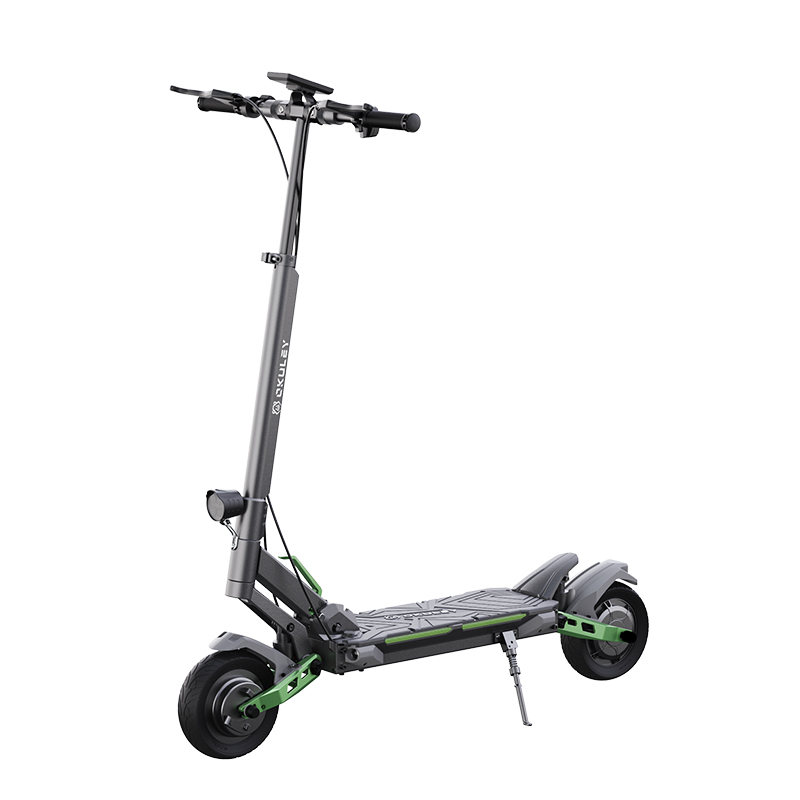Are Electric Scooters the Future of Urban Transportation?
2024-12-20
As cities around the world continue to battle congestion, pollution, and rising transportation costs, alternative modes of transport are gaining popularity. Among these alternatives, electric scooters have emerged as a game-changer, offering a convenient, eco-friendly, and cost-effective solution for short-distance travel. But are electric scooters really the future of urban transportation? Let’s take a closer look at the factors that make electric scooters a potential revolution in how we navigate cities.
What Are Electric Scooters?
Electric scooters are compact, battery-powered vehicles that provide a fun, fast, and efficient way to travel short distances. They typically feature a stand-up design, handlebars, and a footboard, much like traditional scooters, but with the added advantage of an electric motor that propels the rider forward. These scooters are powered by rechargeable batteries, making them a green and energy-efficient mode of transport, especially for urban commuters.
While electric scooters have been around for a few years, they’ve become especially popular in recent times, thanks to their ease of use, affordability, and growing infrastructure to support them. They are widely used for short urban commutes, quick errands, or as a last-mile solution to connect with other forms of public transportation.
Why Are Electric Scooters Gaining Popularity?
Eco-Friendly Transportation
One of the main reasons people are gravitating toward electric scooters is their environmental benefits. Unlike traditional gasoline-powered vehicles, electric scooters produce zero emissions, helping to reduce air pollution and greenhouse gases in crowded urban areas. By using electricity, which can be sourced from renewable energy, electric scooters can significantly reduce a city’s carbon footprint.
Cost-Effective Travel
With rising gas prices and expensive public transportation fares, electric scooters offer a much more affordable solution for daily commuting. Charging an electric scooter typically costs just a fraction of what it would take to fuel a car or pay for a subway ride. Many cities also offer scooter-sharing programs, making it even more accessible for those who don’t want to invest in purchasing one outright.
Convenience and Accessibility
Electric scooters are easy to use and perfect for short trips in the city. Their compact size allows them to navigate through traffic more efficiently than cars or bikes, and they can be parked virtually anywhere. Additionally, scooter-sharing platforms like Lime, Bird, and Spin have made it even easier for people to rent scooters on-demand via a mobile app, making them readily available for quick use.
Decreased Traffic Congestion
Cities worldwide are grappling with traffic jams that waste time and cause frustration for commuters. Electric scooters help alleviate this problem by offering an efficient alternative for short trips that would otherwise require driving or taking public transport. With electric scooters, you can bypass traffic and travel on dedicated bike lanes or pathways, allowing for faster commutes and reduced congestion.
Health Benefits
Riding an electric scooter may not provide as much of a workout as cycling or walking, but it still offers some physical benefits. Balancing and steering the scooter helps improve coordination and balance, while the act of standing upright encourages better posture compared to sitting in a car or bus.
Reduced Carbon Footprint
In addition to reducing air pollution, the widespread adoption of electric scooters can also help reduce a city’s overall carbon footprint. As more people opt for eco-friendly transportation options, the reliance on gas-powered vehicles diminishes, leading to cleaner air and quieter streets.
What Are the Challenges of Electric Scooters?
While electric scooters offer many benefits, there are also some challenges and concerns that need to be addressed for their widespread adoption:
Safety Concerns
The safety of electric scooter riders remains a top concern. Accidents involving electric scooters, particularly in busy urban environments, can result in injuries. Riders are often not required to wear helmets, and the lack of experience or training can lead to accidents. Cities and scooter companies are working on ways to improve safety features, such as better helmet use, speed limits, and more protective regulations.
Regulations and Infrastructure
The rise of electric scooters has led to regulatory challenges in many cities. Local governments are still figuring out the best way to manage scooter-sharing programs, including where scooters can be ridden, how fast they can go, and where they should be parked. Inadequate infrastructure, like the lack of dedicated scooter lanes or charging stations, can also limit the potential of electric scooters as a mainstream transportation option.
Battery Life and Charging Issues
The effectiveness of electric scooters is dependent on their battery life. For longer commutes, the battery may run out of power before reaching the destination, causing inconvenience. Additionally, the availability of charging stations is still limited in many areas, which can make it difficult to find a place to recharge, especially if you own a scooter rather than using a shared one.
Weather and Terrain Limitations
Electric scooters are best suited for smooth, flat terrain. In cities with hilly streets, rain, or snow, electric scooters can become less reliable and potentially unsafe. Weather conditions also affect battery life, as extreme cold or heat can cause performance issues. Riders may also have to contend with poor weather, which can make scooter commuting less appealing.
Maintenance and Durability
While electric scooters are generally low-maintenance, they do require care and attention. Frequent use can lead to wear and tear on tires, brakes, or batteries, which means repairs and maintenance can be necessary. Regular maintenance is required to ensure the scooter runs efficiently and safely.
What Does the Future Hold for Electric Scooters?
Despite the challenges, electric scooters seem to have a bright future ahead. Several cities around the world are adopting infrastructure that supports electric scooters, such as dedicated lanes, parking areas, and more charging stations. In fact, some cities have even begun to include electric scooters as part of their public transportation systems, offering seamless integration between buses, trains, and scooters for last-mile connectivity.
In addition, advancements in technology are addressing many of the current limitations. Batteries are becoming more efficient, allowing for longer trips, and improved safety features like better lighting, brakes, and GPS tracking are being incorporated into newer scooter models. As these technologies improve, the electric scooter industry will likely continue to grow and become an increasingly viable option for urban commuters.
Final Thoughts
Electric scooters are undeniably an exciting and innovative solution to urban transportation challenges. Offering an eco-friendly, cost-effective, and convenient way to travel, they are changing the way we think about commuting in cities. While there are still some hurdles to overcome, such as safety, regulations, and infrastructure, the benefits far outweigh the drawbacks for many people.



